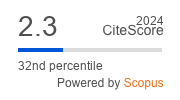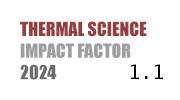ABSTRACT
Methane (CH4) and ethane (C2H6) are the main components of natural gas and coal bed gas in some regions of China, and the presence of ethane further exacerbates the risk of explosions, posing significant safety challenges during the production, storage, transportation, and use of natural gas. This study utilizes an self-constructed small-size experimental platform to investigate the suppression effect of nickel foam on the explosion of CH4/C2H6 mixture in explosion tubes. The results show that nickel foam has two different effects on the CH4/C2H6 flame: promotion and suppression. When the explosion flame quenching fails, the explosion is more violent, the flame propagation velocity and the peak explosion overpressure are both increased, and the peak velocity, the peak pressure, appear at the second wave. When the explosion flame quenching successfully, the flame propagation velocity peak and the explosion overpressure peak are attenuated, and the velocity peak and pressure peak appear in the first wave. The 40PPI nickel foam has the best effect on CH4/C2H6 mixture explosion suppression.
KEYWORDS
PAPER SUBMITTED: 2024-09-07
PAPER REVISED: 2024-10-18
PAPER ACCEPTED: 2024-10-20
PUBLISHED ONLINE: 2024-12-07
THERMAL SCIENCE YEAR
2025, VOLUME
29, ISSUE
Issue 3, PAGES [2465 - 2478]
- Sun, S., et al., Effects of Concentration and Initial Turbulence on The Vented Explosion Characteristics of Methane-Air Mixtures, Fuel, 267 (2020), 117103
- Erjiang, H., et al., Experimental Study on Ethane Ignition Delay Times and Evaluation of Chemical Kinetic Models, Energy and Fuel, 29 (2015), 7, pp. 4557-4566
- Golovastov, S. V., et al., Evolution of Detonation Wave and Parameters of Its Attenuation when Passing along a Porous Coating, Experimental Thermal and Fluid Science, 100 (2019), Jan., pp. 124-134
- Su, B., et al., Coupling Analysis of the Flame Emission Spectra and Explosion Characteristics of CH4/C2H6/Air Mixtures, Energy & Fuels, 34 (2019), 1, pp. 920-928
- Luo, Z., et al., Experimental Study on the Deflagration Characteristics of Methane-Ethane Mixtures in a Closed Duct, Fuel, 259 (2020), 116295
- Duan, Y., et al., Experimental Study on Methane Explosion Characteristics with Different Types of Porous Media, Journal of Loss Prevention in the Process Industries, 69 (2021), 104370
- Cao, X., et al., Experimental Research on the Characteristics of Methane/Air Explosion Affected by Ultrafine Water Mist, Journal of Hazardous Materials, 324 (2017), Part B, pp. 489-497
- Wang, L., et al., Synergistic Suppression Effects of Flame Retardant, Porous Minerals and Nitrogen on Premixed Methane/Air Explosion, Journal of Loss Prevention in the Process Industries, 67 (2020), 104263
- Yang, W., et al., Effect of Ignition Position and Inert Gas on Hydrogen/Air Explosions, International Journal of Hydrogen Energy, 46 (2021), 12, pp. 8820-8833
- Jianhua, S., et al., The Comparative Experimental Study of the Porous Materials Suppressing the Gas Explosion, Procedia Engineering, 26 (2011), pp. 954-960
- Duan, Y., et al., Exploration of Critical Hydrogen-Mixing Ratio of Quenching Methane/Hydrogen Mixture Deflagration under Effect of Porous Materials in Barrier Tube, International Journal of Hydrogen Energy, 48 (2023), 58, pp. 22288-22301
- Cui, Y. Y., et al., Effect of Wire Mesh on Double-Suppression of CH4/Air Mixture Explosions in a Spherical Vessel Connected to Pipe-Lines, Journal of Loss Prevention in the Process Industries, 45 (2017), Jan., pp. 69-77
- Nie, B., et al., The Roles of Foam Ceramics in Suppression of Gas Explosion Overpressure and Quenching of Flame Propagation, Journal of Hazardous Materials, 192 (2011), 2, pp. 741-747
- Pang, L., et al., A Study on the Characteristics of the Deflagration of Hydrogen-Air Mixture under the Effect of a Mesh Aluminum Alloy, Journal of Hazardous Materials, 299 (2015), Dec., pp. 174-180
- Yulong, D., et al., Characteristics of Gas Explosion Diffusion Combustion under Porous Materials, Explosion and Shock Waves, 40 (2020), 9, 095401
- Long, F., et al., Effect of Porous Materials on Explosion Characteristics of Low Ratio Hydrogen/Methane Mixture in Barrier Tube, Journal of Loss Prevention in the Process Industries, 80 (2022), 104875
- Wu, S., Experimental Study on the Suppression of Explosion Flame in Pipe-lines with Porous Materials (in Chinese) M. Sc. thesis, Chongqing University of Science and Technology, Chongqing, China, 2018
- Zhou, S., et al., Effects of Mesh Aluminum Alloy and Aluminum Velvet on The Explosion of H2/air, CH4/ air and C2H2/Air Mixtures, International Journal of Hydrogen Energy, 46 (2021), 27, pp. 14871-14880
- Pei, B., et al., Experimental Study on the Synergistic Inhibition Effect of Nitrogen and Ultrafine Water Mist on Gas Explosion in a Vented Duct, Journal of Loss Prevention in the Process Industries, 40 (2016), Mar., pp. 546-553
- Ibrahim, S. S., Masri, A. R., The Effects of Obstructions on Overpressure Resulting from Premixed Flame Deflagration, Journal of Loss Prevention in the Process Industries, 14 (2001), 3, pp. 213-221
- Hu, E., et al., Experimental and Numerical Study on the Effect of Composition on Laminar Burning Velocities of H2/CO/N2/CO2/Air Mixtures, International Journal of Hydrogen Energy, 37 (2012), 23, pp. 18509-18519
- Luo, Z., et al., Experimental Study on the Deflagration Characteristics of Methane-Ethane Mixtures in a Closed Duct, Fuel, 259 (2020), 116295
- Radulescu, M. I., Lee J. H. S., The Failure Mechanism of Gaseous Detonations: Experiments in Porous Wall Tubes, Combustion & Flame, 131 (2002), 1-2, pp. 29-46
- Ma, Q., et al. Effects of Hydrogen Addition on the Confined and Vented Explosion Behavior of Methane in Air, Journal of Loss Prevention in the Process Industries, 27 (2014), Jan., pp. 65-73
- Rocourt, X., et al., Vented Hydrogen-Air Deflagration in a Small Enclosed Volume, International Journal of Hydrogen Energy, 39 (2014), 35, pp. 20462-20466
- Heinrich, A., et al., Investigation of the Turbulent Near-Wall Flame Behavior for a Sidewall Quenching Burner by Means of a Large Eddy Simulation and Tabulated Chemistry, Fluids, 3 (2018), 3, 65
- Wang, M., et al., Effect of Metal Foam Mesh on Flame Propagation of Biomass-Derived Gas in a Half-Open Duct, ACS Omega, 5 (2020), 32, pp. 20643-20652
- Wang, L., et al., Synergistic Suppression Effects of Flame Retardant, Porous Minerals and Nitrogen on Premixed Methane/Air Explosion, Journal of Loss Prevention in the Process Industries, 67 (2020), 104263
- Chen, P., et al., Effects of Metal Foam Meshes on Premixed Methane-Air Flame Propagation in the Closed Duct, Journal of Loss Prevention in the Process Industries, 47 (2017), May, pp. 22-28

